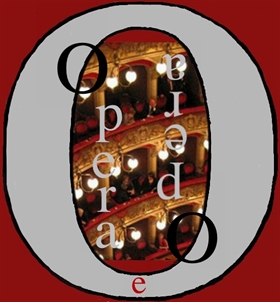Review: TAMERLANO at the Teatro alla Scala: Diego Fasolis conducts Händel also with the Barocchisti on historical instruments.
By William Fratti
After the great success achieved in The Triumph of Time and Disillusionment, Diego Fasolis returns to La Scala to conduct Händel in Tamerlano, once again with his collaborators I Barocchisti della Radiotelevisione Svizzera and with the La Scala musicians on historical instruments.

The three-act opera, with a libretto by Nicola Francesco Haym, is undoubtedly one of the masterpieces of the prolific German composer, as it not only overflows with sublime music, but is based on a libretto with an intense and significant dramaturgy.
The show directed by Davide Livermore is certainly one of the best of the Turin director, certainly not only for the captivating transposition to the times of the October Revolution, but above all for the attention to detail, the meticulous work on gestures, the meticulous use of continuous movements and shifts to convey action even during long sentimental arias. Some passages are highly realistic, others very poetic - also thanks to the help of the talented mimes - in an amalgam that holds our attention high for over four hours. Mariana Fracasso's female costumes are literally astonishing, as are the male ones, including make-up. The scenes by Davide Livermore and Giò Forma are beautiful, as are the videos by Videomakers D-Wok.

Diego Fasolis confirms himself as an excellent director of this repertoire, in particular for his style and coherence. Above all, we appreciate the cutting and sewing work carried out on the various versions of the opera in order to arrive at the best possible adaptation to the needs of the performers and the new staging.
The American star Bejun Mehta takes on the role of the protagonist with extreme ease, a role written for contralto. The countertenor shows a clear and sonorous soprano vocality that flows into falsetto only in the most extreme high notes, perhaps due to the announced cold. He gives an excellent rendering of the character, especially in the combination of Tamerlane / Stalin, which exudes a good-natured perfidy that seems almost surreal.

Also excellent is the Argentinian Franco Fagioli in the mezzo-sopranile part of Andronico. If he initially appears a little modest, starting from the first finale he fully demonstrates his abilities. Therefore not only “Although the idol I adore despises me” is a truly successful piece, but also the subsequent “Cerco in vain di placa” and “Più d'una tigre altero”, where the countertenor shows off his great skills in coloratura and the incredible ability to quickly flow from the lowest to the highest notes.
Good performance by Maria Grazia Schiavo as Asteria, very correct in style, but perhaps a little lacking in dramatic accent.

Marianne Crebassa's Irene is more punctual in the facets of her character, especially in the very successful "Par che mi nasca in breast", a pathetic aria that the French mezzo-soprano makes truly moving.
Christian Senn's Leone/Rasputin was very successful, particularly in the second aria borrowed from the 1731 version.
Placido Domingo's Bajazet is too old, but despite everything he enjoys great personal success.
William Fratti
PHOTOS Brescia and Amisano

